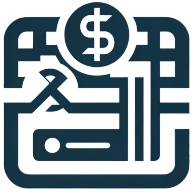6 Strategies for Payroll Compliance With Multiple Employers Or Income Sources
Managing payroll compliance becomes increasingly complex when dealing with multiple employers or income sources. Modern businesses face unique challenges in tracking multi-state work, integrating software for accurate calculations, and centralizing employee data. This article explores innovative strategies to streamline payroll processes, improve communication between employers, and leverage cutting-edge technologies like blockchain for efficient income verification.
- Track Multi-State Work for Tax Compliance
- Integrate Software for Accurate Tax Calculations
- Centralize Employee Data Management
- Establish Clear Inter-Employer Communication Channels
- Conduct Regular Multi-Employer Payroll Training
- Leverage Blockchain for Income Verification
Track Multi-State Work for Tax Compliance
Managing payroll compliance for employees juggling multiple employers or income streams can be a real challenge, especially when it comes to taxes. One of the biggest challenges I've faced is dealing with employees who work in different states or jurisdictions, each with its own set of tax rules. For example, if someone lives in one state but works remotely for a company based in another, figuring out the correct tax withholding can be complex. To address this, I've found that accurately tracking where employees are working and understanding the tax obligations in each location is crucial. Using a robust HRIS has been invaluable—it automates tax calculations and helps ensure we're complying with all the different state and local tax laws. Staying informed about reciprocity agreements between states has also been helpful; they can sometimes reduce the risk of double taxation. Regularly auditing our payroll practices has allowed us to identify and rectify any issues before they escalate into larger problems. While it's not always straightforward, with the right tools and a proactive approach, managing multi-jurisdictional payroll compliance becomes much more manageable.

Integrate Software for Accurate Tax Calculations
Integrating payroll software with tax calculation systems is a crucial strategy for maintaining compliance when dealing with multiple employers or income sources. This approach streamlines the process of accurately calculating taxes across various income streams. By automating these calculations, the risk of human error is significantly reduced, ensuring that employees receive correct pay and appropriate deductions are made.
This integration can also help in generating comprehensive reports for auditing purposes, making it easier to track and verify compliance across different employers. Employers should consider implementing such integrated systems to improve accuracy and efficiency in their payroll processes. Take the first step towards better payroll compliance by exploring integrated software solutions today.
Centralize Employee Data Management
Implementing centralized employee data management solutions offers a robust approach to handling payroll compliance across multiple employers or income sources. These systems create a single source of truth for employee information, reducing discrepancies and ensuring consistency in data across different employers. Centralized management allows for easier updates and maintenance of employee records, including tax information and employment details. It also facilitates more efficient reporting and analysis, enabling quick identification of potential compliance issues.
Such solutions can significantly reduce the administrative burden associated with managing multiple payroll systems. Organizations should prioritize the adoption of centralized employee data management to enhance their payroll compliance efforts. Start by assessing your current data management practices and consider how a centralized solution could improve your payroll processes.
Establish Clear Inter-Employer Communication Channels
Establishing clear communication channels with all employers is essential for maintaining payroll compliance when dealing with multiple income sources. Effective communication ensures that all parties are aware of their responsibilities and can share necessary information in a timely manner. Regular updates on changes in employment status, tax regulations, or payroll policies can be easily disseminated through these channels. This approach helps prevent misunderstandings that could lead to compliance issues.
Clear communication also facilitates faster resolution of any discrepancies or problems that may arise in the payroll process. Employers should focus on creating and maintaining open lines of communication with all parties involved in the payroll process. Take action to establish or improve your communication channels with all employers today.
Conduct Regular Multi-Employer Payroll Training
Conducting regular training on multi-employer payroll regulations is a proactive strategy for ensuring compliance. These training sessions keep payroll staff up-to-date with the latest laws and best practices in managing payroll across multiple employers or income sources. By investing in ongoing education, organizations can build a knowledgeable team capable of navigating complex payroll scenarios. Regular training also helps in identifying potential compliance risks before they become issues.
It provides an opportunity for staff to ask questions and clarify any uncertainties about multi-employer payroll processes. Organizations should prioritize the development of a comprehensive training program for their payroll staff. Start planning your next payroll compliance training session to stay ahead of regulatory changes and improve your team's expertise.
Leverage Blockchain for Income Verification
Utilizing blockchain technology for secure income source verification presents an innovative approach to payroll compliance with multiple employers. Blockchain can create an immutable record of income sources and employment history, ensuring the authenticity and security of this crucial information. This technology can streamline the verification process, reducing the time and resources needed to confirm income from various sources. By providing a transparent and tamper-proof system, blockchain can significantly enhance trust and accuracy in payroll compliance efforts.
It also offers potential for real-time updating of employment and income information, further improving compliance. Organizations should explore the potential of blockchain technology in their payroll processes. Begin by researching how blockchain can be integrated into your existing payroll systems to enhance security and efficiency.

